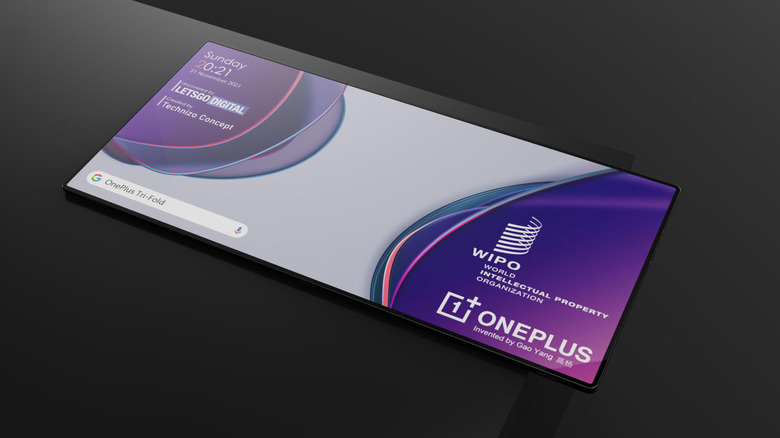OnePlus Tri-Fold Patent Is Dreamy But Doesn't Make Sense Yet
Flexible displays didn't just open the world to foldable phones. They also opened the doors for other devices that morph from one form to another. The current case is, of course, limited to the foldable phones that Samsung has been selling for almost three years now, but those are hardly the only applications of deformable and flexible display panels. There is, for example, the LG Rollable phone that never came to be, and this new patent from OnePlus that is both more practical yet also unfeasible at the same time.
Phone to tablet and back again
One of the biggest real-world problems that foldable devices are supposed to address is that of screen space. Almost everyone wants a larger screen to view their content but not a single one of those wants a bigger device that they can't bring along with them. It's a duality that can't easily be solved by traditional smartphones and tablets, or fully addressed by having two screens joined at the hip.
To some extent, the Galaxy Z Fold and similar devices like the Huawei Mate X2 and Xiaomi Mi Mix Fold try to offer a solution, but one that comes with many of compromises. The durability of the flexible screen is the most prominent, but it's hardly the only concern. The tablet formed by an opened foldable is hardly like the traditional rectangular tablet we're familiar with, but making the screen longer or taller makes the device hardly usable as a phone when folded shut.
There have been other ideas at how to resolve those diametrically opposite aspects, like a rollable device that has still to prove its mettle in the real world. Another, however, is having a tablet that folds three times to form a more normal-looking phone, and that is exactly the idea that OnePlus is apparently toying with.
Two hinges are not better than one
OnePlus wouldn't be the first to patent a tri-fold foldable device, and even its sibling OPPO has filed for such an idea. There are, of course, different ways to fold a phone and OnePlus' idea is a bit unique. There are, of course, two hinges but they both fold in the same direction unlike other patents like those from Samsung. The three parts aren't uniform in thickness, and the two outer panels fold over each other.
Like the other tri-fold patents, the aim of this kind of design is to be able to fold a long tablet down to a phone that is closer to the traditional phones we have today instead of the extremely slim Galaxy Z Fold 3. As ideal as that may sound, actually putting it into practice might be more trouble than it's worth at the moment.
We're still at a point where just folding a screen once is still problematic. Straining a single, long flexible display increases the risk of damaging that screen. The way the device folds also puts the fragile screen on the outside, making it an "outie", and that comes with its own set of problems, as proven by the first Huawei Mate X.

Size still matters
While OnePlus' patent does try to address the problem of screen size, it doesn't exactly take care of the problem of heft and thickness. While screens can be flexible and thin, other components, especially the battery, still can't. Based on the patent, almost all of the electronics are concentrated on one of the sides of the device when laid out flat. Considering the size of the screen when folded as well as those components, the folded device would be just as thick or even thicker than the Galaxy Z Fold 3.
The design also suggests that the tablet won't lay flat when unfolded, and that one part of the display will always be exposed when folded and placed on a surface. It's hardly the ideal situation with the technologies and materials we have today, and gives more problems than it solves. Perhaps in a few years, we'd have addressed at least the durability of flexible displays but, at least until then, these kinds of patents will remain just that.
